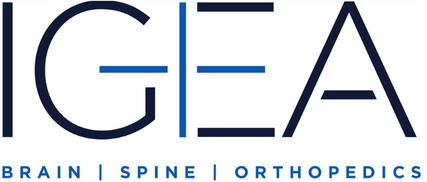THROMBOLYTIC AND MECHANICAL THROMBECTOMY TREATMENT IN NEW JERSEY & NEW YORK
After recognizing the signs of a stroke, fast action is the key to successful treatment and recovery. IGEA Brain, Spine, & Orthopedics offers state-of-the-art stroke support and treatment, including thrombolytic and mechanical thrombectomy treatments. We can help patients in the tri-state area of New Jersey, New York, and Connecticut get back on their feet.
RECOGNIZING A STROKE
A stroke occurs when the blood supply to the brain is interrupted or reduced, most often due to a blood clot. As a result, the brain is suddenly cut off from the nutrients and oxygen it needs to function. Symptoms appear suddenly and often include:
- Numbness or weakness in one or more extremity
- Total or partial paralysis or numbness in the face
- Trouble seeing in one or both eyes
- Difficulty speaking
- Extreme confusion
- Intense headaches
- Dizziness
Recognizing these symptoms is essential to a patient’s recovery. Once the stroke begins, brain cells begin to die within minutes. Emergency medical care is necessary to restore blood flow to the brain and halt the stroke’s progress. Otherwise, patients face the risk of developing severe long-term effects.
WHAT IS THROMBOLYTIC THERAPY?
When a patient is actively suffering from a stroke, thrombolytic therapy is the first course of action. This emergency procedure involves the administration of a medication known as tPA that is given through an IV to break up and dissolve blood clots. If administered soon enough, the blood clots can be destroyed quickly enough to allow the patient to recover.
It is important to remember that thrombolytic therapy is an emergency measure that is more effective the sooner it is used. The best success rates are found in patients that receive treatment within three hours after noticing the first symptoms. Fast action is necessary for this advanced treatment to be effective and may be the deciding factor in whether a patient will recover fully.
In certain cases, particularly when patients are outside the time window for IV tPA, an addition procedure known as a thrombectomy can be performed to restore blood flow to the brain is a safe and expeditious manner.
HOW IT WORKS
On arrival at the hospital, a team of emergency room physicians, neurologists and neurosurgeons will evaluate the patient to quickly decide the best course of treatment. The evaluation includes a thorough medical background check so doctors can check for any factors that may affect the patient’s reaction to the treatment. These factors include:
- Previous or existing conditions
- Current medications and prescriptions
- Surgical history and recent medical procedures
If the patient is eligible for thrombolytic therapy, the patient will receive the IV tPA. If the patient is ineligible for the IV tPA or do not respond to the medication, they may be eligible for endovascular treatment. In this case, doctors will insert a catheter through a small hole in the groin or wrist into a blood vessel and guide it to the clot in the brain. This allows them to either pull the clot out directly with various devices or inject drugs directly into the clot to try to break up the clot. IGEA Brain, Spine, & Orthopedics use the latest and most advanced technologies such as stentreivers, aspiration devices, and balloon guided catheters to restore blood flow and provide relief from the symptoms of a stroke.
POST-TREATMENT RECOVERY
Once thrombolytic and/or thrombectomy therapy is successful, the patient will continue to recover in the hospital. Recovery is different for every individual and may take anywhere from a few weeks to a few years. At IGEA Brain, Spine & Orthopedics, our team of compassionate doctors do everything possible to keep patients in the best of health. Our advanced treatments and cutting-edge technologies help to shorten the recovery time and ensure a healthier future. Contact us to learn more today about stroke care at our convenient locations in New Jersey and New York.

